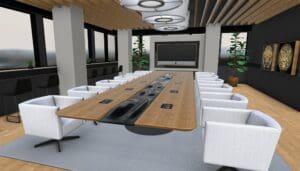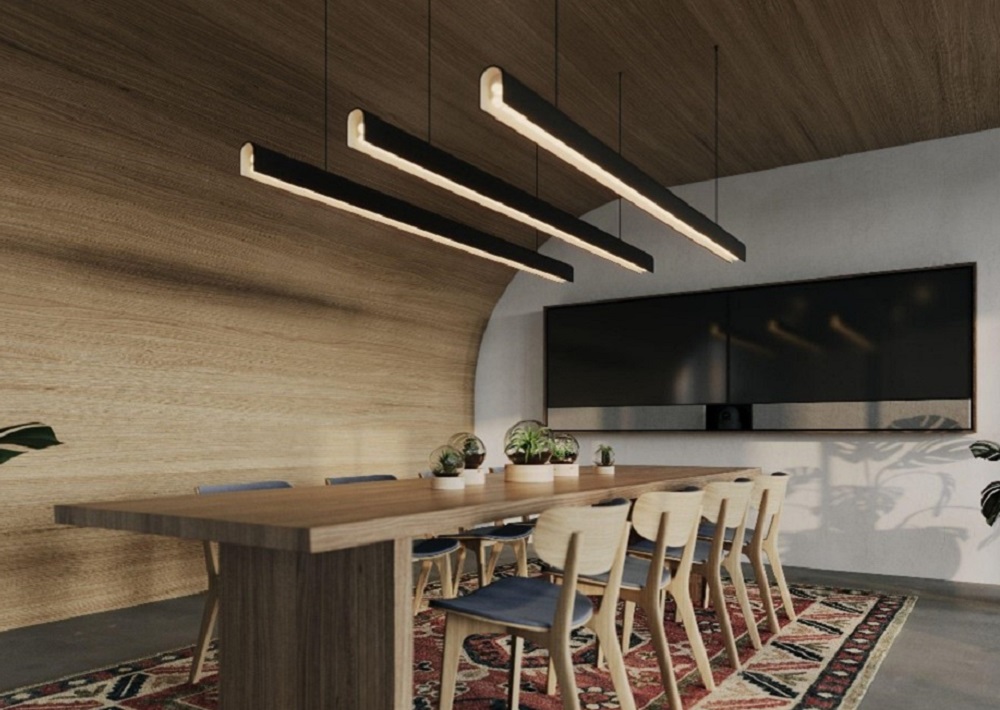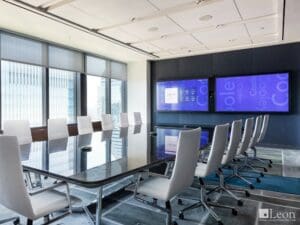The hyper-charged, technology-forward mindset of the roaring 2020s has given businesses and individuals challenges and opportunities to consider. Ironically, this is not altogether different than 100 years ago. Both eras were preceded by pandemics, economic challenges and global uncertainties. And while modern advances in collaboration technology have introduced consideration for new spaces and methods; the foundational assumptions around others, like design aesthetic, remain unchanged. Execution, however, in both periods remains vastly different. As a result, execution tradeoffs today can leverage past lessons to ensure higher rates of success.
Office Design: Then and Now

Photo by SariethKasuun
In 1923, office space was undergoing a massive transformation. The rise of knowledge workers gave way to individuals gathering in offices where workplace designers focused on maximum efficiency. A business’s top-down hierarchical structures were reinforced in space layout with managers sitting with team members resembling manufacturing line floors. But design aesthetics during this decade gave way to legendary architects like Detroit-based Albert Kahn who established a necessary melding of art and technology, business and bohemia.
Workers of the 1920s had in-office mandates. Working from home was considered unemployment. After the devastating financial implications of the stock market crash of 1929, the birth and excitement of art-deco style inspired spaces soared. And this directly influenced how teams functionally collaborated. By the late 1930s, the European concept of office landscapes changed the functional layout and design of spaces. Biophilic and furniture design reinforced signature front rows to office action where Mies Van Der Rohe’s Barcelona chair (introduced in 1929) was a stylistic statement.
The Advent of Technology
Technology changed space layouts. In the early 1930s, General Motors spun out a typewriter acquisition they had made into the Electromatic Corporation which produced some of the early, mass-produced typewriters. By 1933, IBM acquired Electromatic, and 10 years later, they introduced new tech that launched the concept of proportional spacing in documents. Tech advancements and space design have gone hand in hand through the decades.
But design conscious leaders know that with the advent of each technology innovation era, we move into foreign, unchartered waters each time. Inevitably, trade-offs are made between functionality and finish. For the last several decades, the innovation and design pace have not only changed the game but have created new rules altogether. And the trade-offs today are breeding misalignments between space planning, design and technology more often rather than up-leveling style and performance.
Tug of War Between IT & Design
This tug of war between facilities and IT is common. IT and audiovisual (AV) teams maintain they are not brought into design considerations early enough while design and space teams maintain a lack of style consciousness by IT and AV. Budgetary spending remains disproportionate, typically across the board with both sides maintaining which side does or does not get their share. Tables and furniture take more budget than TVs and speakers, a fact loathed by many technology practitioners. Additionally, TVs and other tech provide immense collaborative value but look like interplanetary objects, a frustrating sentiment felt by many designers.
Architects, builders, consultants and others ride the middle of the battlefield. Retained as project advisors with no monetary incentives related to what actually gets deployed, their roles are often misunderstood and convoluted. It is not an ‘either-or’ situation for them. It is form and function. Here, the tradeoffs are less pronounced or opposed as they need both. However, the mission and need remain consistent to drive relevant outcomes for the customer for many years to come.
What Does ‘Good Enough’ Mean?
Modern industrial technology design undergoes change at each major innovation window. Branded products have the functional look and feel requirements related to packaging tech. Some are elegant, while many are alien objects. The result is a mashup of inconsistencies when it comes to physical space. When technology wins, workspaces are sterile, drab, and lack inspiration and life. When design wins, technology is inadequately planned, under specified and hidden. Both use the phrase, “good enough.” However, modern design on both sides cannot and will not be ‘good enough’ with the new business stakes.
Every organization and business have a need for relevant outcomes, and the stakes are high. The non-negotiable terms of staying in business relate to identifying needs and meeting them as well as creating and sustaining profits. Executives are demanding that employees return to work while employees demand hybrid flexibility. Every business needs a successful outcome in this matter in order to survive, so a resolution is now more needed than ever. The “good enough” mindset is the epitome of the apathetic approach to solving business problems.
Rethinking the ‘Good Enough’ Mindset
Consider the collaboration problem in a company. According to a recent Deloitte survey, 75% of workers view collaboration as important while 1 in 3 view their organization as doing it well. This is a culture problem which turns out to be tech and design’s problem. Workplace collaboration does not equal a video sound bar or a chair — it is both. Effective collaboration among employees is a worthy problem to solve.
The resolution of collaboration problems yields big-time results. Here are a few metrics to consider:
- Teamwork and collaboration increase customer sales. A company’s collaboration index increases sales by 27% and improves customer satisfaction ratings by 41%, according to data from Frost & Sullivan. The study also showed that collaboration improves product quality by 34% and improves product development by 30%.
- Successful collaboration at work improves innovation by 30%. Companies that collaborate are 30% more innovative and at least 36% more productive than those that do not, according to the numbers released by Frost & Sullivan.
- The majority of workplace employees feel that collaboration is lacking in their company. Only 9% of surveyed employees reported that their place of employment had highly effective sharing and collaboration tools and systems in a Deloitte study. An additional 39% of respondents said that their company’s collaboration methods were effective.
Relevant business outcomes are derived from conscious attention given to the challenges and opportunities on both sides of the equation. Tech companies especially have to be mindful of value creation when advocating for an aesthetic shift. The ‘good enough’ tech can be a monumental miss when a business is trying to drive a relevant outcome.
Good enough is an unsettling term. It is the neutral zone in which both sides lose. When it comes to collaboration spaces, the gulf not only is a business setback, but it also breeds cultural distrust. This is not about being cheap or expensive. It is about a fundamental apathetic settling to kick the can down the road. Outcomes aside, the potential misses cost most in future business and talent. Good enough is not enough to drive an outcome.
Becoming Style Conscious and Outcome Driven

Current offices are now collaboration centers. Of course, that means that tech and aesthetics are critical to success. Photo courtesy of Leon Speakers.
Too often, tech companies miss their historical expansion opportunity to add value. Beautiful design is legendary and fosters innovation and creativity. It provides the window and opportunity to align with physical design aesthetics in a style-conscious and outcome-driven way. Moreover, future relevance is created, earned and maintained by bringing value to the table.
Becoming a style-conscious technology leader demonstrates value. To align by design, one must become design aware. Learn how colors, materials and finishes impact space planning and design. Create products to be both seen and concealed. Transform foreign technological objects into warm, inviting and approachable assets into spaces where outcomes are driven. Design spaces with nothing left on the cutting room floor.
To be collaborative, you have to collaborate. This requires style sensibilities for tech professionals. Outcomes delivered are the relevant currencies achieved with elevated style consciousness and education.
Jeff Day is CRO, Leon Speakers and former Chair, AVIXA Board of Directors 2021.





